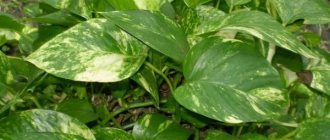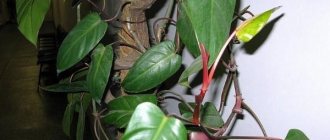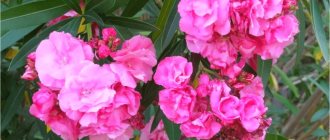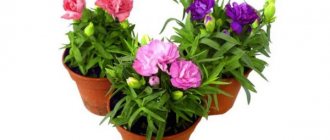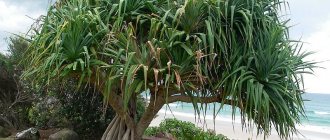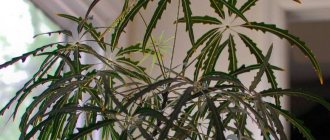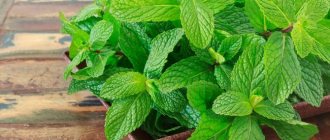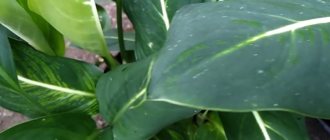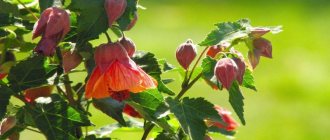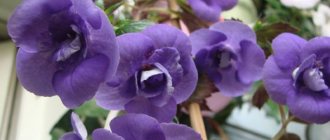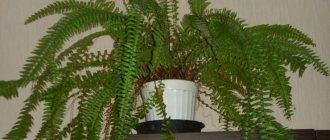Philodendron Sello is a very interesting plant with beautiful leaves that will ideally decorate a large, bright room. It also perfectly purifies the air, absorbing toxic substances and destroying harmful microbes.
Description
Philodendron belongs to the genus of evergreen flowering perennials and belongs to the Araceae family. In the wild, these plants are most often found in the humid tropical climates of Mexico and America. They grow both in forests and in swampy areas, on river banks, and along roads. Philodendrons can climb other plants and trees using their aerial roots. This is why they got their name, which is translated from ancient Greek as a combination of the words “love” and “tree”.
Philodendrons have aerial and underground roots. They need the former for attachment to trees and plants, as well as for transporting water and nutrients. Leaves of different shades of green are arranged alternately, are large in size (up to 2 m) and varied in shape, which at a young age may differ from the shape of the leaves of an adult plant. The inflorescence is a white spadix with a two-color thick spathe.
The philodendron fruit is a white berry with a greenish tint.
Plant care
Watering
Residents of the rainforest, philodendrons, love moisture. In spring and summer, regular and abundant watering should be done, allowing the top layer of soil to dry slightly. Watering should be done with soft water at room temperature, which has stood for at least 6 hours. Tap water will lead to salinization or alkalization of the soil, which can cause the death of the plant. The best option would be rain or melt water.
In autumn, watering is gradually reduced. By winter - reduce it to a minimum, but do not allow the earthen clod to dry out.
The water from the pan should be drained after each watering.
Philodendrons love moisture.
Top dressing
For normal development, philodendron needs feeding. Young plants especially depend on them during active growth, but do not overfeed them, as excess fertilizer will cause poor formation of young foliage.
From March to September, adult plants are fed every week with complex mineral fertilizers diluted 2–3 times, or once every 2 weeks with the same fertilizers, but in the prescribed concentration. The composition of fertilizing should include nitrogen, potassium and phosphorus in equal proportions. Make sure that fertilizers do not contain calcium salts.
Organic fertilizers will bring a lot of benefits to philodendron. Manure diluted in water to a light straw color will be an ideal top dressing. It should be applied after watering.
Organic fertilizers should be alternated with mineral ones.
In winter, feeding the plants is not stopped, but only reduced to once a month. But if philodendron is kept at low temperatures, then feeding should be stopped.
The transplanted plant is not fertilized for six months.
For large tree-like philodendrons, well-rotted compost is added to the top layer of soil every summer.
Flowering at home
Philodendrons usually bloom in greenhouses or conservatories. It is almost impossible to achieve this phenomenon at home. However, there are species that can delight you with flowering at home. These include: Xanadu, Blushing, Scaly, Warty, Double-pinnate, Silver Queen. In order for a plant to bloom, you need to create an environment close to the natural conditions of the habitat: taking into account humidity, temperature, soil composition, properly selected fertilizers, lighting.
The philodendron flower pleases with its beauty for a very short time - just a day.
At home, philodendron practically does not bloom.
Rest period
In philodendrons, the dormant period is weakly expressed. It begins in the second half of December and lasts until the beginning of March. At this time, reduce watering and fertilizing the plant, but do not stop. The temperature is maintained within 20 ° C, the flower is kept in a bright place.
Errors in care and their elimination - table
| Error | Cause | Elimination |
| The leaves begin to dry from the tips and become papery to the touch. | The indoor air is too dry. |
|
| Dry light spots on the leaves. | Sunburn. | Protect the plant from direct sunlight. |
| Elongated shoots, small leaves, faded color. | Lack of light. | Place the plant in a brighter place. |
| Rotting of stems and shoots at the roots. | Combination of low temperature with high humidity, heavy soil. |
|
| The leaves curl. | Excess fertilizer in the soil. |
|
| The apical leaves are small and yellow. | Lack of nutrients. | Increase plant nutrition. |
| The lower leaves turn yellow and die. | If this process is accompanied by the growth of young and healthy foliage, everything is in order. | The natural process of dying off old leaves. |
| The leaves turn black. | The effect of cold air. | Remove the philodendron from the draft and find a warmer place for it. |
| The leaves turn yellow and rust. | Massive yellowing of leaves indicates excessive watering and low temperatures. |
|
An interesting feature of philodendron is the formation of liquid droplets at the tips of the leaves. They appear when the air humidity is high, for example, before rain. This phenomenon is called guttation. This may also indicate an excess of moisture.
Peculiarities
Philodendron Sello has another name: bipinnate. In nature, it lives in the forest tropics of Bolivia, southern Brazil, and northern Argentina. It has a straight, short woody trunk, on which traces of fallen leaves form beautiful patterns. The leathery leaves are arrow-shaped, twice pinnately dissected, up to 90 cm in length. They are green with a gray tint and have long petioles. Nowadays, Philodendron Sello is often grown as a spectacular greenhouse and indoor plant.
Types of Philodendron with photos and names
The numerous genus has more than 400 species. Let's look at the most popular ones in home floriculture.
Philodendron verrucosum
Philodendron verrucosum photo
Liana with soft creeping shoots. The leaf blades are heart-shaped, reach a length of 15-20 cm, a width of about 10 cm. Their surface is velvety, the color is dark green, with bronze-brown stripes running along the veins of a lighter shade.
Philodendron blushing Philodendron erubescens
Philodendron blushing Philodendron erubescens photo
The shoots stretch up to 1.8 m. The lower part becomes lignified, turning into a strong, vertically located trunk. The leaves are oblong, whole. Length – 30 cm, width – about 25 cm. The surface of the leaf plate is glossy, bright green in color, the reverse side has a reddish tint.
Philodendron ivy scandens Philodendron hederaceum or climbing philodendron Philodendron scandens
Philodendron ivy Philodendron hederaceum or climbing Philodendron Philodendron scandens photo
The length of the vine reaches 6 m, and is often grown as an hanging plant. The leaves are large (length - 15-30 cm, width - 10 cm), heart-shaped, elongated, whole.
Philodendron atom Philodendron atom
Philodendron atom Philodendron atom
A plant with an erect stem. The leaf blades are palmately divided, the edges are wavy. Their length is about 30 cm, the surface is glossy, bright green.
Philodendron Sello or bipinnate Philodendron selloum = philodendron bipinnatifidum
Philodendron Sello or bipinnate Philodendron selloum = philodendron bipinnatifidum photo
The height of the stem is about 3 m, gradually becoming woody. Heart-shaped leaf plates are attached to long petioles, the edges are notched. Their length can reach 90 cm. Color varies from light green to dark green.
Guitar-shaped Philodendron Philodendron panduriforme
Guitar-shaped Philodendron Philodendron panduriforme photo
The flexible stem reaches a length of 2 m and needs support. The shape of the leaf plate is similar to a guitar, the surface is glossy, dark green in color.
Lobed philodendron Philodendron pedatum or stop-shaped philodendron
Lobed philodendron Philodendron pedatum or stop-shaped philodendron photo
The stem is thicker, but flexible. Heart-shaped leaf plates are attached to long petioles; at first they are whole, then cut into 5 lobes. They stretch 30-40 cm in length and have an emerald color.
Evans' Philodendron Philodendron x evansii
Evans' Philodendron Philodendron x evansii photo
Hybrid form. The leaf plates are heart-shaped, incised, the edges are wavy, the surface is shiny. The dimensions are amazing: their length is 60-80 cm, width 40-50 cm. Young leaves have a green-brown color with veins of a bright green hue; as the leaf grows, it becomes dark green.
Philodendron radiatum
Philodendron radiatum photo
A fast-growing vine, reaching a length of 1.5-3 m. The leaf plates are dissected, rigid, and stretch 20 cm in length.
Philodendron graceful elegans Philodendron elegans or narrowly dissected philodendron Philodendron angustisectum
Philodendron graceful elegans Philodendron elegans or narrowly dissected philodendron Philodendron angustisectum
The only flexible shoot is covered with large leaves (length 45-70 cm). The leaf blades are oval-shaped, dissected, and painted dark green.
Philodendron xanadu Philodendron xanadu
Philodendron xanadu Philodendron xanadu photo
Liana with woody stem. The leaf blades reach a length of 40 cm. They are soft, oblong, become pinnately dissected as they grow, and are painted bright green.
Philodendron squamiferum
Philodendron squamiferum photo
A liana with leaves 25-30 cm long. They are attached to long petioles of a reddish hue, covered with scale-like hairs. The leaf blades are first cut into 3 lobes, then into 5, the posterior lobes are smaller. The tips of the blades are sharp.
Philodendron bipennifolium
Philodendron double-pinnately cut Philodendron bipennifolium photo
The leaf blades reach a length of 40 cm. In young leaves, the division into blades is not clearly expressed, first there are 5 of them. The edges of the blades are rounded.
Philodendron spear-shaped Philodendron hastatum
Philodendron spear-shaped Philodendron hastatum photo
A flexible vine that needs support. The length of the leaf plates is 35-40 cm, they have a light green color, and are shaped like an arrowhead or a spear.
Philodendron Martius Philodendron martianum or Philodendron cannifolium
Philodendron Martius Philodendron martianum or Philodendron cannifolium photo
Bush-shaped plant. The leaf blades are heart-shaped, oblong, whole, reach a length of 40-50 cm, the surface is glossy. They are attached to long thickened (swollen) petioles, which can reach a diameter of 7-8 cm.
Care instructions
Philodendron selloum is not a very difficult houseplant to grow. But you should know that it needs large spaces for good growth. In addition, its sap is poisonous, so trim the plant only with gloves and keep children and pets away from contact with it. To grow a healthy, beautiful plant, carefully study the rules of care .
Lighting
The plant loves bright, diffused light. Excessive lighting causes the leaf blades to turn pale. Do not expose the leaves to direct sunlight, otherwise burns are inevitable. With insufficient light, the leaves fade and lose their decorative effect.
Temperature
Philodendron Sello feels great at a temperature of +17–+25°C. In winter, the ideal temperature is not lower than +14°. It needs regular ventilation of the room, but drafts are detrimental to this plant.
Air humidity
This representative of the tropics loves high humidity (about 70%). Mist your philodendron daily using a fine mist sprayer to keep the leaves streak-free. To increase air humidity, you can place the plant on a tray with moistened pebbles or place an aquarium nearby.
Watering
Abundant and frequent watering with soft, settled water at room temperature is recommended. The soil should always be slightly moist. Be sure to drain excess water from the pan to prevent root rot.
Top dressing
In the spring-summer period, 2 times a month it is necessary to apply special fertilizers for plants with decorative foliage.
Trimming
In spring, philodendron is cut below the upper tier zone at the aerial roots, leaving a small stem. It is recommended to pinch shoots above the upper internodes to prevent the plant from growing too much. Aerial roots can be shortened a little, but cannot be cut off. They should be directed downwards and buried.
Reviews about the plant
The support for the philodendron should not be smooth
Future owners of philodendrons should be guided not only by their appearance, but also by the amount of space in the room. Tree varieties are particularly demanding of living space. Most often they are used to decorate country houses and office spaces due to their large size. At the same time, we should not forget that a lack of living space leads to significant injury to plants, falling and withering of leaves. As a result, the philodendron may lose its attractiveness.
If the choice is in favor of vines, they should be provided with comfortable support. Such philodendrons cling to aerial roots during growth. Therefore, the choice should be made on supports wrapped in suitable material, for example, moss or coconut fiber. Branched stands also look great. When skillfully pinching the shoots, the philodendron very quickly entwines them.
Most varieties of philodendron grow well on slightly acidic and neutral substrates. At the same time, they require the soil to be sufficiently loose and light. Therefore, the soil should be mixed with sand, peat or humus in a 1:1 ratio. Of the commercially available substrates for philodendrons, the best soils are those intended for violets and orchids. At the same time, it is worth adding additional baking powder to them. Expanded clay, small pebbles or broken bricks must be poured onto the bottom of the pot.
Pot and transplant
The size of the pot largely depends on the type of philodendron.
Philodendron feels most comfortable in a rather cramped pot. As soon as the roots intertwine into a tight ball, the plant needs a transplant. To do this, you should take a pot that will be about 10% larger than the previous one.
Philodendron replanting is usually required every three years. It is best to produce it in late winter or early spring. After transplantation, the plant should be well shaded and watering reduced for approximately 14 days.
Step by step process
Planting philodendron does not require any special skills. However, in order for the plant to feel comfortable, the following instructions must be followed:
- Drainage is poured into the bottom of the pot. There should be quite a lot of it - at least a quarter of the height of the vessel.
- Pre-prepared soil is poured over the drainage.
- The plant is planted in the soil so that the roots are completely covered with soil. In this case, you should ensure that the growing point of small philodendrons is not covered.
- The plant is watered abundantly.
To plant a philodendron you will need a pot, drainage, soil and support.
Transfer
Actively growing young philodendrons need annual replanting; adult plants need to be replanted every few years. You can purchase special soil for these plants or mix equal amounts of orchid soil and peat. If you want to prepare the mixture yourself, then take:
- 1 part turf;
- 3 parts leaf soil;
- 1 part sand.
Reproduction
This species is difficult to propagate by cuttings, since it has practically no stem. Therefore, Philodendron Sello "Mexican snake" is grown from seeds. They can be purchased in specialized stores. Try growing philodendron from seeds at home using the following algorithm:
- soak the seeds for a day in a solution with growth stimulants (for example, potassium humate, HB-101);
- Use a sharp needle to scratch the seeds so that their shell is damaged;
- in a container with loose soil, previously calcined and poured boiling water, place the seeds on the surface;
- lightly sprinkle them with the earthen mixture and spray them with a spray bottle;
- cover with a transparent bag or glass on top;
- Place the mini-greenhouse in a warm place with good lighting.
- ventilate the greenhouse every day, leaving it open for a few minutes, and moisten the soil so that it does not dry out;
- when the seeds germinate (after about 1.5–2 months), remove the bag and continue care;
- Pick up the seedlings only when a pair of true leaves appear on the plants.
Popular types
There are many types and varieties of this plant.
Philodendron climbing
The leaf blades are heart-shaped, dense, their length is 14 cm. The plant is unpretentious, shade-tolerant, and can be used as a hanging plant. Aerial roots form on the stem. It grows and develops normally in a city apartment and does not take up much space.
Philodendron sello (bipinnate)
Philodendron sello (bipinnate)
It is distinguished by large, cut into lobes, leaf blades of an emerald hue. It looks very decorative. The length of the leaves can reach 70-80 cm, and the height of the plant is about 1.5-2 m.
Philodendron atom
Needs careful care. Its leaf blades are beautifully curled, the flowerpot is lush and compact.
Philodendron scandance
This vine has flexible shoots and grows well in shade and partial shade. The leaves are green, glossy, and heart-shaped. Their length reaches 10-15 cm.
Philodendron blushing
The shoots are thin, fragile, grow up to 175 cm. Over time, they become lignified and become a vertical trunk. The shape of the leaf blades is elongated, the edge is pointed, length up to 29 cm, width up to 24 cm. The shade is bright green, reddish on the reverse side, the surface of the leaves is shiny.
Popular varieties
- Red Emerald: compact, leaf length reaches 25 cm, leaf petioles and young shoots are reddish in color;
We grow at home
This is a shade-loving plant and the majority of varieties are able to reach maturity only under certain circumstances. Therefore, most species are grown in greenhouses. However, philodendron can also develop at home, but for this you need to create a comfortable microclimate and properly care for it.
Lighting
He feels good in diffused but bright light, but direct sunlight is destructive for him. Due to exposure to ultraviolet radiation, the leaves begin to turn yellow and fall off. Light adjustment depends on the variety and type of philodendron. It will be able to form powerful, spreading bushes with sufficient lighting. Some species do well in artificial light, others require a place on the east or northwest side.
Humidity, temperature
This is a resident of humid forests, so you need to prepare the place in advance and maintain a certain humidity. An abundance of watering will not be able to compensate for dry air. In the warm season, spring and summer, the plant needs to be sprayed. In summer, a small plant is given a kind of shower. In winter, it is better to place it away from heating appliances. If this is not possible, radiators should be covered with a damp cloth, wetting it periodically. Some gardeners advise placing a container with sphagnum moss, which has low thermal conductivity, next to it.
In addition, in winter, no matter what type of philodendron it is, it is not recommended to keep it near a window. Frost is as dangerous as the sun's rays. Regardless of the time of year, you should regularly wipe the leaves with a damp cloth.
Philodendron, is it possible to keep such a moisture-loving plant at home? Yes, you can, if you maintain the optimal temperature for it. For the warm season, the optimal temperature is considered to be from 22 to 25 degrees. The plant can tolerate an increase in the temperature on the thermometer, provided there is a sufficient degree of humidity.
The cold season is not so important for it, but the temperature should not fall below 15 degrees. The amount of watering is significantly reduced, which will subsequently prevent rotting of the root system. It is recommended to provide additional lighting through the use of fluorescent lamps.
Watering
Before watering, you need to check the soil. The earthen ball must be moistened. If the top is one third dry, then the plant is ready for watering. Reducing watering is carried out in the autumn. In winter, it is completely reduced, keeping the soil only moist.
Philodendron at home is watered with warm, settled water. It should be soft with a low acid-base balance. Once the soil is completely moist, drain the excess water from the pan.
Feeding
Caring for philodendron also includes feeding. Under natural conditions, the plant feeds on leaf humus, waste products of animals, insects and rainwater.
At home, it is fed with ready-made fertilizers intended for ornamental leafy plants. The finished concentrates contain equal proportions of nitrogen, potassium, and phosphorus. Philodendron is fed from March to September.
Feeding tips:
- Feeding is carried out once every two weeks if the plant is outdoors;
- If it is located in a warm room, it is fed only once a month;
- An ampelous plant with a tree-like stem can be fertilized with aged compost. It is added in the summer, only once during transplantation. Compost is added to the topsoil;
- If humus was added, then fertilizing with other types of fertilizers is carried out no earlier than after 2 months;
- Fertilizing is carried out only after thorough watering, when the entire earthen ball is well moistened;
- There are instructions on the packages of ready-made fertilizers. However, flower growers recommend reducing the specified concentration of the composition by 20 percent.
Care
In order for the philodendron to grow, it needs to be provided with certain conditions and care. The plant does not need constant attention and is not capricious - an indoor flower can live for several days without watering.
However, the tropical perennial has some requirements and they must be observed - so that the philodendron maintains its decorative appearance and is healthy.
Bloom
Not all species bloom when grown in containers, even if agricultural practices are strictly followed. Basically, buds appear only in greenhouse conditions. Philodendron flowers do not have much decorative value, since their shape is a spadix that covers the bract. The flower itself is faded and inexpressive in color, and the bract either matches the color (just a slightly different shade) or is reddish.
Temperature
Philodendron grows naturally in the tropics. But, when growing in containers, it is more suitable for a room where the temperature is kept in the range of +20...+25˚ C. In winter, the temperature is reduced by 2-3˚ C, but it should not drop below +15˚ C, since such conditions can cause the plant to rot. Only some varieties can sometimes adapt to temperatures of +12...+13˚ C, but at the same time they stop their growth.
Attention!
When the thermometer mark is higher than recommended, the indoor flower begins to overheat and this negatively affects the appearance of the plant.
Spraying
Philodendron is not picky about conditions, but the humidity in the room where it is located must be about 70%. In another case, the indoor flower begins to fade smoothly. To provide suitable humidity for the philodendron, it is periodically sprayed or the foliage is wiped with a dampened cloth. The procedure is performed every 3-4 days. Also, you should not place the plant near heating devices and heating systems, as they greatly dry out the air in the room during the winter season.
Illumination
Some varieties of philodendron develop normally in partial shade or under artificial light. But in order for the leaf plates to be large and beautiful, the exotic vine requires fairly bright lighting. It should be diffused, since direct contact with the sun's rays is undesirable for a tropical perennial. When the variety is variegated, it cannot grow in partial shade - this leads to a change in the color of the foliage to a solid green.
Location
Philodendron is a plant that can be classified as shade-tolerant. But it is better when it is located in a place where there is sufficiently bright and diffused lighting. A good place for a tropical liana is the windowsill of a window facing east. When there are only southern windows, it should be placed not on the windowsill, but closer to the middle of the room, in order to protect the house flower from burns. It is also important that the container with the tropical perennial is not placed in a draft, as in such a place the philodendron will gradually fade.
Watering
The tropical liana is moisture-loving, so the perennial must be watered regularly and abundantly. The soil mixture in the flower container must be constantly slightly moist, so the flower is watered as the top layer of soil dries. But liquid stagnation or overflow should not be allowed. To moisten the soil mixture in the pot, use warm (+25...+37˚ C) settled water (at least 24 hours), melt or rain water.
Pot
The volume of the flower container must correspond to the root system - so that it lies freely in the pot and the small roots do not bend. When choosing a container for replanting because the previous container has already outgrown the philodendron, the pot should be 15-20% larger than the previous one. It is not advisable to take a larger container, as this will somewhat slow down the development of the indoor plant.
On a note!
The material of the container is unimportant - both ceramic and plastic are suitable if the soil is selected correctly.
Top dressing
Philodendron is fed in spring and summer once every 2 weeks. A complex fertilizer is suitable for decorative deciduous plants. Dilute the drug according to the manufacturer's instructions. When the vine looks good, it is permissible to slightly reduce the concentration relative to that recommended by the manufacturer, so as not to oversaturate the soil mixture with nutrients.
Trimming
To ensure that the bush is well branched and lush, the philodendron is periodically pruned to shape it. But, in order not to harm the vine, formative pruning is carried out only in early spring. All cut areas are sprinkled with crushed activated carbon. It is permissible to trim the stem only at a height of 40 cm, and only in the area of internodes. It is not recommended to cut off healthy aerial roots. Sanitary pruning is also done, but it is performed based on the condition of the plant. Remove all damaged shoots, dried aerial roots and leaf blades.
Rest phase
Philodendron growth slows down at the beginning of winter - this indicates the beginning of its dormant period. But it is not strongly expressed in tropical perennials. Before winter, to prepare a container flower, gradually reduce the amount of watering and fertilizing. Starting in December, philodendron is not fed. Then, approximately from February, the abundance of watering is gradually restored and in March they begin to feed again.
Transfer
Home care for philodendron includes replanting. This process should be carried out in spring, when the plant is full of vitality. Young animals are transplanted annually. The process is then carried out every 3-4 years.
For large plants, only the top layer of soil, 5 centimeters thick, is changed. The climbing philodendron also needs to be replanted, but after that, you need to lightly pinch its elongated thin stems at the ends. This contributes to the emergence of new shoots.
If the plant was recently purchased, then it is necessary to check its root system. Have the roots entwined the entire earthen lump? The plant needs to be transplanted into a larger container. Otherwise, it will stop its growth and development.
When replanting, special attention is paid to the soil. Its base (substrate) must have a slightly acidic, or preferably neutral, environment. The permissible pH ranges from 5.5 to
Philodendron leaves love the organic matter found in the soil. The optimal ratio is 90 percent of humus from the total amount. At the same time, the base should have a loose structure, which promotes oxygen saturation. You can use ready-made substrates for deciduous trees.
Many gardeners prepare the substrate themselves:
| Turf | 1 part |
| Humus soil | 2 parts |
| High peat | 1 part |
| Sand | 0.5 parts |
As a base for the soil, use ready-made soil for orchids or make drainage from wine corks. Transplantation is carried out by transferring an earthen clod along with the plant.
Description of the plant
The rhizome is well branched and superficial. The main shoot is thin, the length varies, its height can be several centimeters, but can reach 2-3 m. With age, the base of the main shoot becomes woody. The bark is brownish and peels off. The leaf blades look decorative and can reach 2 m in length. Their arrangement on the stem is alternate, on a long petiole. The foliage shape is oval, dissected, arrow-shaped. Throughout the life of a liana, it is capable of changing its general appearance several times.
The main color of the leaf blade is green, but the color varies in intensity. There are variegated varieties. The plant also grows cataphylls - scale-like leaves that protect vegetative buds. When the leaf falls off, in its place there is a small recess in which there was a petiole. The shape of Philodendron is not the same, this plant can be:
- subshrub;
- epiphyte;
- ground flexible vine;
- hemiepiphyte.
A flower is a spadix surrounded by a bract. Located on a small peduncle, its color is beige, pastel pink or greenish. Length – about 25 cm. Bract – cream or scarlet color. In the upper part of the inflorescence there are reproductive male flowers, followed by asexual ones, and in the lower part - female ones. The activity of male and female flowers on one inflorescence does not coincide and pollination requires several ears that bloom at different times.
At first, the vertical inflorescence grows upward, then deviates slightly, and the bract moves to the side. Philodendron is pollinated by beetles and bread beetles. Afterwards, the spadix grows vertically again and is completely covered by the bract. Each specimen can have from 1 to 11 inflorescences during the flowering period. The fruit is a berry that takes approximately 1 year to ripen. During this period, the spadix is tightly covered with a bract. The ripened fruit is yellowish, greenish or whitish in color, filled with small seeds.
Attention!
Often varieties of vines are grown in botanical gardens and greenhouses, but some of the philodendrons grow not only there - they are suitable for keeping in an apartment or house. Caring for them at home is easy, and photos of the species confirm their effectiveness.
Philodendron home propagation
It is bred in spring or summer. Philodendron propagation is carried out in several ways:
- Seeds
- Vegetatively (tops, stem segments, leaves with a “heel”)
Philodendron from seeds
Growing philodendron from seeds is not difficult, as is using other well-known methods. In order for the stems and seeds to strengthen, light soil is needed. To do this, mix peat and sand in equal quantities. The stalk is placed in the soil with the bud up and lightly sprinkled with sand, after which the base is well moistened and covered with polyethylene or glass. Several times a week (2-3) glass and polyethylene are removed briefly for ventilation. This will help avoid rotting.
Philodendron vegetative propagation
The vegetative method of propagation is carried out by planting aerial roots in the ground. The apical method is called when the apical shoots are used for propagation. They are planted in moistened sand, the temperature range of which is 22-26 degrees. They are covered with film or glass on top.
Planted cuttings are ventilated daily. After they have roots, which can be identified by a new leaf, they are transplanted into pots 10 centimeters high. Propagation has a beneficial effect on an old plant. It produces new side shoots and acquires more vital energy.
Propagation of philodendron by cuttings
Philodendron cuttings photo of cuttings rooted in water
Flowering at home is extremely rare, and pollination requires the presence of several flowering plants, so the plant is most often grown from cuttings.
Philodendron reproduces successfully vegetatively. It is better to carry out the procedure in spring or summer.
- After pruning the plant, a large amount of planting material is obtained. These are apical or stem cuttings.
- The cuttings should contain 2-3 internodes.
- Root in a sand-peat mixture or water.
- First, keep the cuttings for a day in the root solution.
- Place the cuttings horizontally or stick them into the soil at an angle of 30-45°, cover the container with film or glass to create a greenhouse effect.
- Maintain the air temperature between 25-30 °C. Ventilate at least once every 2 days. The rooting process lasts 7-30 days.
- If there are aerial roots in the internodes, this happens quickly.
Philodendron is also propagated by leaf cuttings with a heel (the leaf plate is cut off along with the petiole and a piece of old bark). Root in water or sand-peat mixture. Once roots appear, plant in a permanent pot.
Pests
With proper care and appropriate humidity, the plant is not so afraid of pests. However, in some cases they attack by sucking the juice from the leaves. These are spider mites, thrips and scale insects.
If there are visible silvery traces of small streaks and spots on the leaves, then these are thrips. Scale insects leave a mark near the veins of the green part in the form of brownish, less often translucent spots. Yellow spots that do not have a clear shape indicate the appearance of ticks. The latter is facilitated by increased room temperature and dry air. Humidity of at least 40 percent is considered normal.
To begin with, such a plant is isolated from a healthy one. For minor damage, it is enough to remove the sucking insects using a soap solution in which a swab is wetted. They wipe the leaves on both sides.
When the form is advanced, special preparations are used: actellik, karbofos, confidor and other acaricides. If necessary, the procedure is repeated after 10 days.
Additionally, you can treat the plant with mustard solution. Sixty grams of dry mustard powder are diluted with one liter of water and infused for three days. The resulting mustard concentrate is diluted in 20 liters of water and the plants are treated.
Diseases and pests, other difficulties in caring for philodendron
Root rot occurs from overwatering. An emergency transplant is required. Remove the vine from the pot, remove the affected areas of the root, treat the cut areas with a fungicide, and also disinfect the pot. Replace the substrate with a new one and plant the plant.
Pests: scale thrips, aphids, spider mites. If pests are detected, it is necessary to treat with an insecticide and spill the soil with aktara.
Possible difficulties:
- If the soil is initially chosen incorrectly (if it is heavy), proper moistening is difficult: dense soil will cake and take a long time to dry out.
- From excess fertilizer, the leaves wither, their tips turn yellow and brown.
- Due to a lack of nutrients, the leaf blades become smaller, the tips turn yellow, dry out, and overall growth rates slow down.
- With insufficient lighting, new leaves grow smaller, their color is pale, and their growth rate slows down.
- If the humidity of the earthen ball is constant, but the leaves have lost their elasticity, the lighting is too intense.
- Direct sunlight leaves burns on the leaves in the form of brown spots.
- The leaves become brown, brown, and fall off - insufficient watering.
- Yellowing of leaves occurs from excess moisture.
- The leaves become covered with black spots or dark green or brown spots appear between the veins - hypothermia.
- The leaf blades wrinkle, turn brown, and the tips turn up - the air is dry or the air temperature is too high.
Types and varieties of plants
The philodendron flower, although common in Central and South America, has gained popularity all over the world due to its green leaves of various shapes, which will add a breath of air to the atmosphere of the room.
Philodendron species cause some confusion in their names even among breeders due to the external similarity of many of them. It makes no sense to list them all, and there is no need. To grow this plant at home, it will be enough to know only the most popular and unpretentious ones.
Philodendron species and names:
- The climbing philodendron has delicate heart-shaped leaves. Belongs to the genus of lianas. Ideal for hanging planters.
- Philodendron blushes gets its name from the greenish-red hue of its stems and leaves when young. As they mature, they acquire grayish-greenish hues. Has increased shade tolerance.
- Philodendron bipinnatifidum is distinguished by its unpretentiousness and ease of care. It has large leaves and is optimal in those rooms where you need to create an impromptu “forest”.
- Sello has a tree-like shape. At home it grows to almost two meters.
- Philodendron Atom is suitable for those who like compactness due to slow growth. It is easy to care for and its leaves have a rich green tint.
- Philodendron Imperial is divided into two subspecies, Green and Red. The leaves of the latter have a reddish tint. The advantage is that it is not afraid of dry air.
- Xanadu in natural tropical conditions can reach four meters in height. Indoors the maximum height is 2 meters.
Philodendron is mostly a splitting flower. Therefore, you need to prepare a support point for it in advance.
What does the flower look like?
Sello is one of the largest representatives of philodendrons. This applies to both the overall size of the bush and the leaves themselves. They immediately catch your eye: large plates cut along the edge into segments. The length of an adult leaf is almost 1 m; it is attached to a long fleshy petiole. When the time comes, the old lower leaves die off, thus forming a straight stem. At the place where the petiole is attached there remains a clearly visible white spot with a dot in the middle. It is very similar to the human eye. The bush itself, in indoor conditions, rarely exceeds 3 m in height. But you must admit that this is too much for a home.
Young foliage first appears in the form of an arrow. Gradually, a leaf begins to unwind from it. At first it is wrinkled and light, but over time it straightens and darkens.
Sello's root system is superficial, which creates some difficulties when choosing a pot. You should immediately discard light plastic dishes: the bush will simply topple it under the weight of its leaves. It is better to opt for clay flowerpots, but they should not be deep and narrow.
Interesting facts to note
The leaves and stem of the plant secrete juice, which contains poisons. Processing, transplanting and propagation are carried out wearing gloves.
The leaves of this plant can predict the weather. For example, on the eve of rain, droplets of water appear on them.
You can take a closer look at philodendron if only because of its beneficial properties. Indoors, it destroys about 30 percent of germs. Some varieties like Sello and Congo completely neutralize benzene and formaldehyde.
The vegetative method is most often used to propagate philodendron. It allows you to quickly and without much hassle not only get a new plant, but also tidy up an old bush. However, it is not always possible to get a cutting. In addition, there are varieties of philodendron that have practically no stem, so they reproduce by seeds, for example, Philodendron Sello. You can get seeds at any flower shop, but now we’ll talk about how to properly grow philodendron from seeds.
Do I need to prepare the seeds?
Although philodendron seeds have good germination, it is not 100%, and gardeners often complain that only one seed sprouted from a whole bag, or even nothing sprouted at all.
To ensure that the purchased seeds do not disappoint, they simply need to be prepared first by subjecting them to two important and necessary procedures:
- firstly, soak for a day in a growth stimulator;
- secondly, scratch each seed, damaging its shell.
What soil should I sow in?
At the stage of seed germination, light, loose soil will be required, since the seeds of philodendron are small. In dense, heavy soil, it will be difficult for tender shoots to break through to the top.
For sowing, you can use a regular universal substrate, adding a little coconut fiber to it. Before filling it with soil, drainage should be placed at the bottom of the container, which will protect the seedlings from rotting.
Spread the seeds over the surface of the soil, lightly sprinkle with soil and spray well with a spray bottle. Now all that remains is to organize greenhouse conditions for them: cover the container with a bag or a piece of glass.
Place the greenhouse on a warm windowsill with good lighting. In order for the seeds to germinate, they will need high humidity, in addition, the air temperature in the greenhouse under the film must be at least 25 degrees Celsius.
Reproduction of philodendron at home
Philodendron can be propagated using cuttings or seeds.
Philodendron cuttings should be kept under film
When propagating by cuttings, it is enough to cut off the top with several leaves. An additional advantage will be the presence of aerial roots.
To root a philodendron, you will need the following:
- Cuttings must be treated with activated carbon powder and left in air for 3–4 hours.
- Prepare the soil. To do this, mix peat and sand in equal proportions and water thoroughly.
- Stick the cuttings into the prepared substrate.
- Cover the pots with film and secure it well so that air does not get inside. You can also use glass jars if there is a suitable volume. Cuttings need good lighting and a temperature of about 30 ºС.
- Every few days you should open the greenhouse briefly to spray the soil. After a month, you can increase the ventilation time, and after another 30 days, remove the greenhouse.
- When new leaves appear, philodendrons can be transplanted into larger pots and cared for as adults.
If you propagate philodendron using air layering, the stem with aerial roots does not need to be cut from the plant. It is enough to attach the roots to the soil surface with a pin. Once the cuttings have taken root, they can be cut from the mother plant.
Growing philodendron from seeds is a long and labor-intensive process.
Since philodendron practically does not bloom at home, seeds should be purchased at the store. As a rule, the manufacturer indicates their germination rate on the packaging, usually it is 80%.
Instructions for sowing seeds:
- For a day, soak the seeds in a solution of potassium humate, HB-101 or another growth stimulant, diluted in accordance with the attached description.
- Fill the pots with sand and water well. The substrate should first be poured with boiling water or heated in the oven.
- Place the seeds on the surface and sprinkle with water.
- Cover the pots with film or glass and place in a warm, well-lit place.
- Do not allow the soil to dry out, and ventilate your plantings for a few minutes every day.
Philodendron germinates 1.5–2 months after planting the seeds. From the moment of germination, gradually accustom the plant to air, increasing the ventilation time. As soon as real leaves appear, you can plant the sprouts into pots. After a year, replant the philodendron and care for it as usual.
Philodendron seeds are purchased at a specialty store. Before planting, they must be soaked in a growth stimulator for 24 hours to improve germination.
The pots must be filled with calcined sand and watered abundantly. Place the seeds on the surface of the sand and moisten them with a spray bottle. Cover the containers with polyethylene and place in a warm, well-lit place.
Polyethylene must be removed daily for a few minutes to ventilate the seedlings. The first shoots will appear in 45-60 days. After the seedlings emerge, the polyethylene is removed for a longer time so that the seedlings get used to the air. If the seedlings have two true sheets, the polyethylene is removed and the sprouts are planted in separate pots. Plants are replanted after a year.
When growing a plant at home, it is necessary to take into account the type of plant. If the plant variety is tree-like, then such a plant needs large rooms for comfortable growth. Liana-like varieties are more suitable for growing in apartment conditions. For such varieties of Philodendron it is necessary to provide good support. A wooden support braided with coconut fiber is suitable for this.
The light should be diffused, the plant does not tolerate direct sunlight, but the artificial lighting in the room should be bright.
The humidity in the room should be at least 85%. In addition to watering, the plant must be irrigated in hot weather. In winter, the plant is removed as far as possible from heating devices or covered with damp towels, periodically wetting them. It is also impossible to keep it on the windowsill, since frost is no less destructive for Philodendron. When the cold season sets in, watering is reduced to prevent root rot. Leaves should be wiped with a damp cloth once a week.
In cloudy weather, it is recommended to provide additional lighting for the plant using fluorescent lamps.
